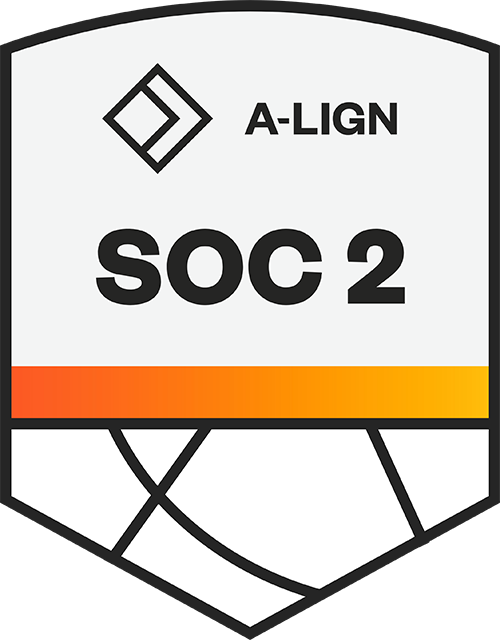
Understanding GDPR: Key Principles and Practical Steps for Compliance
22 JanThe EU General Data Protection Regulation (GDPR) is here, and organizations are becoming increasingly aware that GDPR is not a one-time project.
Understanding the details and implications of the GDPR can be a daunting task. Some companies might still feel it is easier to bury their heads in the sand rather than invest the necessary resources to achieve GDPR compliance. However, failure to comply with the GDPR leaves organizations open to substantial fines. According to the ICO (Information Commissioner’s Office), this could mean a fine of up to €20 million, or 4% of your total worldwide annual turnover (whichever is higher).
Based on our experience, it is clear that there is no “one size fits all” approach to GDPR. However, there are a few common steps that all organizations should follow when embarking on the journey to GDPR compliance.*
Step 1: Understanding the GDPR articles
The first step toward GDPR compliance is being aware of and understanding the key GDPR articles. There are many useful sources of information available, but a good place to start is the ICO website. The most important at the outset is Article 5, which sets out the seven key principles of GDPR:
- Lawfulness, Fairness, and Transparency
- Purpose Limitation
- Data Minimization
- Accuracy
- Storage Limitation
- Integrity and Confidentiality (Security)
- Accountability
Compliance with these key principles is essential to achieving strong data protection practices.
Step 2: Conducting an information audit
To ensure that you are protecting your information according to the 7 GDPR principles, you first need to conduct an information audit to determine exactly what information you hold. As part of the audit, organizations must examine how they collect, process, share, store, and delete data.
Step 3: Creating an Information Asset Register (IAR)
Many organizations associate “assets” with IT equipment such as laptops and servers (i.e., physical assets).
However, it is crucial that organizations also maintain a record of their information assets to understand what they are, who they are shared with, and how they are classified (e.g., OFFICIAL, SECRET, TOP SECRET, etc.).
An Information Asset Register (IAR) is a centralized repository that contains details of all the information assets held by your organization. This includes physical assets (e.g., paper files) and electronic assets (e.g., spreadsheets) and includes records of the data being held, as well as how you store, process, and share it.
Knowing and fully understanding what information you hold is critical to protecting it and leveraging its potential. Therefore, creating an IAR is a vital step to protecting your information assets, as required under GDPR.
Step 4: Data flow mapping
Another essential step toward GDPR compliance is understanding how information moves through your organization.
Expanding your IAR to include data flow mapping can increase visibility into data flows, reducing the risk (and magnitude) of data breaches. In the event of a breach, an organization would be able to quickly identify what data had been compromised and take the necessary action to contain the breach, minimizing further financial or reputational damage.
Following steps 1 to 4 outlined above will not only assist your organization in protecting its data but also demonstrate to auditors and regulators that you have taken the necessary steps to protect the information you hold.
How a data privacy management software solution can help…
While it is possible to create and maintain your Information Asset Register (IAR) using spreadsheets and word documents, the real challenge lies in keeping the register up to date and ensuring consistent data quality. This challenge will only increase as data volumes grow, leading many organizations to seek tools to automate this process. We believe that investing in an online IAR is critical to reducing the ongoing costs of information governance, improving data quality, and proactively managing information risks.
Many of our customers have been searching for a tool to help align with major GDPR principles. CoreStream GRC’s Information Asset Management (IAM) software provides organizations with an online Information Asset Register to manage the end-to-end asset lifecycle. It enables organizations to identify, understand, and manage their information assets and flows, as well as any associated risks, breaches, and actions. Our platform is intuitive, flexible, and configurable to meet the unique needs of each customer.
For more information on CoreStream GRC’s Information Asset Register software and Data Flow Mapping or to request more details about our platform or arrange a demonstration, please contact us here.
FAQ: Commonly Searched Questions About GDPR Compliance
1. What is an Information Asset Register (IAR), and why do I need it for GDPR compliance?
An Information Asset Register is a centralized record of all the information assets within your organization. It is crucial for GDPR compliance because it helps you identify, classify, and protect the data you hold.
2. What are the 7 key principles of GDPR?
The seven key principles outlined in Article 5 of the GDPR are: Lawfulness, Fairness, and Transparency; Purpose Limitation; Data Minimization; Accuracy; Storage Limitation; Integrity and Confidentiality (Security); and Accountability.
3. What is data flow mapping, and how does it help with GDPR?
Data flow mapping tracks how information moves through your organization. It helps improve visibility into data processes, reduces the risk of breaches, and ensures that any data-related incidents can be quickly identified and contained.
4. How can technology help with GDPR compliance?
Automated tools, like CoreStream GRC’s Information Asset Management software, simplify the process of creating and maintaining an IAR, improving data quality, reducing manual effort, and ensuring compliance with GDPR requirements.
5. What happens if my organization fails to comply with GDPR?
Failure to comply with GDPR can result in significant fines—up to €20 million or 4% of your annual global revenue, whichever is higher—as well as reputational damage.
This guide is provided for informational purposes only and does not constitute legal advice or legal analysis.
COMPANY

CoreStream Ltd
20 Grosvenor Pl,London,
SW1X 7HN
4th Floor,
New York,
NY 10017
Privacy Overview
| Cookie | Duration | Description |
|---|---|---|
| _GRECAPTCHA | 5 months 27 days | Google Recaptcha service sets this cookie to identify bots to protect the website against malicious spam attacks. |
| cookielawinfo-checkbox-analytics | 11 months | This cookie is set by GDPR Cookie Consent plugin. The cookie is used to store the user consent for the cookies in the category "Analytics". |
| cookielawinfo-checkbox-functional | 11 months | The cookie is set by GDPR cookie consent to record the user consent for the cookies in the category "Functional". |
| cookielawinfo-checkbox-necessary | 11 months | This cookie is set by GDPR Cookie Consent plugin. The cookies is used to store the user consent for the cookies in the category "Necessary". |
| cookielawinfo-checkbox-others | 11 months | This cookie is set by GDPR Cookie Consent plugin. The cookie is used to store the user consent for the cookies in the category "Other. |
| cookielawinfo-checkbox-performance | 11 months | This cookie is set by GDPR Cookie Consent plugin. The cookie is used to store the user consent for the cookies in the category "Performance". |
| CookieLawInfoConsent | 1 year | CookieYes sets this cookie to record the default button state of the corresponding category and the status of CCPA. It works only in coordination with the primary cookie. |
| viewed_cookie_policy | 11 months | The cookie is set by the GDPR Cookie Consent plugin and is used to store whether or not user has consented to the use of cookies. It does not store any personal data. |
| Cookie | Duration | Description |
|---|---|---|
| _clck | 1 year | Microsoft Clarity sets this cookie to retain the browser's Clarity User ID and settings exclusive to that website. This guarantees that actions taken during subsequent visits to the same website will be linked to the same user ID. |
| _clsk | 1 day | Microsoft Clarity sets this cookie to store and consolidate a user's pageviews into a single session recording. |
| _ga | 1 year 1 month 4 days | Google Analytics sets this cookie to calculate visitor, session and campaign data and track site usage for the site's analytics report. The cookie stores information anonymously and assigns a randomly generated number to recognise unique visitors. |
| _ga_* | 1 year 1 month 4 days | Google Analytics sets this cookie to store and count page views. |
| _gid | 1 day | Google Analytics sets this cookie to store information on how visitors use a website while also creating an analytics report of the website's performance. Some of the collected data includes the number of visitors, their source, and the pages they visit anonymously. |
| CLID | 1 year | Microsoft Clarity set this cookie to store information about how visitors interact with the website. The cookie helps to provide an analysis report. The data collection includes the number of visitors, where they visit the website, and the pages visited. |
| MR | 7 days | This cookie, set by Bing, is used to collect user information for analytics purposes. |
| SM | session | Microsoft Clarity cookie set this cookie for synchronizing the MUID across Microsoft domains. |
| vuid | 1 year 1 month 4 days | Vimeo installs this cookie to collect tracking information by setting a unique ID to embed videos on the website. |
| Cookie | Duration | Description |
|---|---|---|
| ANONCHK | 10 minutes | The ANONCHK cookie, set by Bing, is used to store a user's session ID and verify ads' clicks on the Bing search engine. The cookie helps in reporting and personalization as well. |
| MUID | 1 year 24 days | Bing sets this cookie to recognise unique web browsers visiting Microsoft sites. This cookie is used for advertising, site analytics, and other operations. |
| Cookie | Duration | Description |
|---|---|---|
| __cf_bm | 30 minutes | Cloudflare set the cookie to support Cloudflare Bot Management. |
| Cookie | Duration | Description |
|---|---|---|
| _gat | 1 minute | Google Universal Analytics sets this cookie to restrain request rate and thus limit data collection on high-traffic sites. |
| _uetsid | 1 day | Bing Ads sets this cookie to engage with a user that has previously visited the website. |
| _uetvid | 1 year 24 days | Bing Ads sets this cookie to engage with a user that has previously visited the website. |
| SRM_B | 1 year 24 days | Used by Microsoft Advertising as a unique ID for visitors. |






